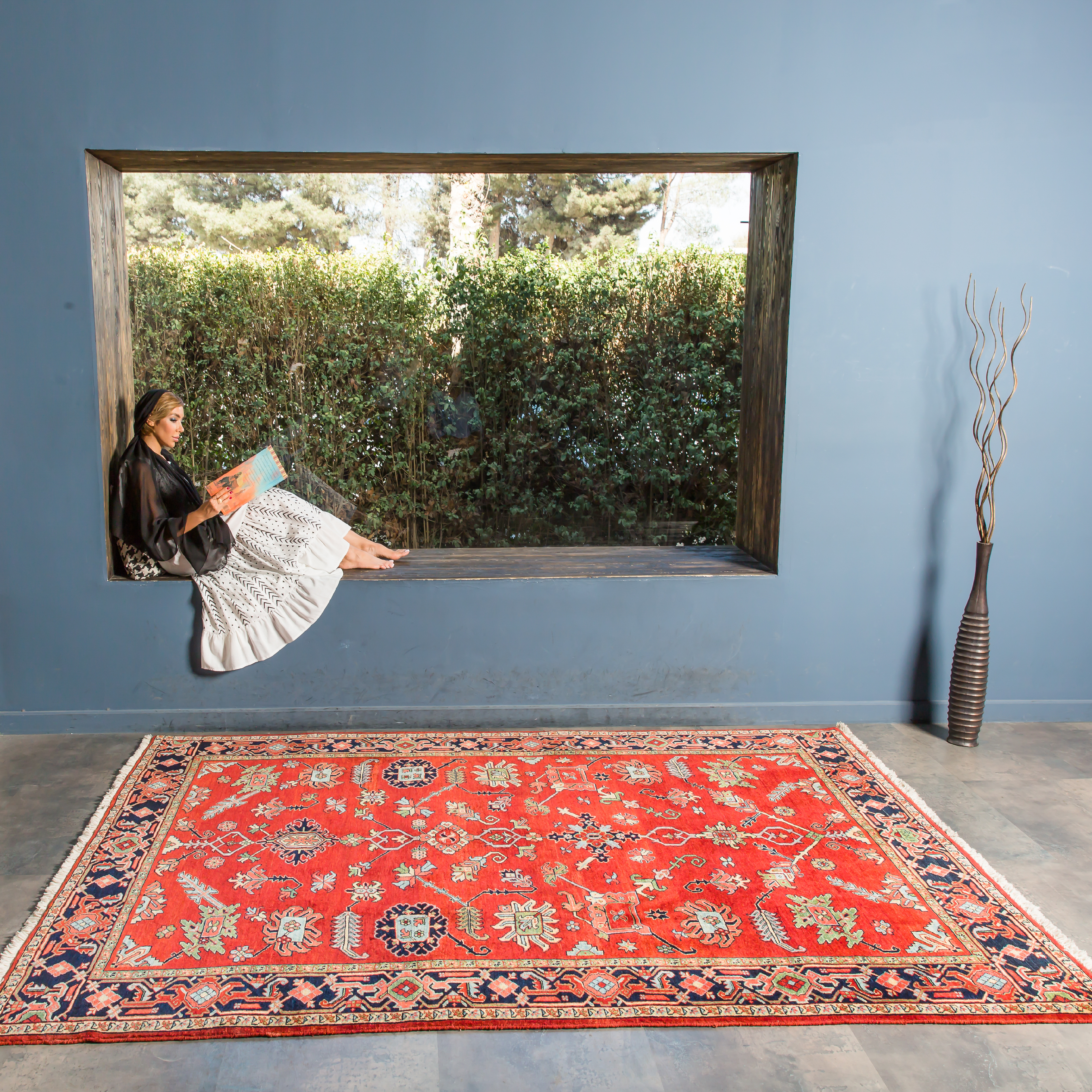
The origin of broken lines
Maps are either curved or geometric. This is a very simple yet significantly helpful definition at the beginning of understanding carpet designs. This seemingly simple but helpful classification serves as a good starting point for a better understanding of carpet motifs, especially those of rural and nomadic carpets. 
But where do these broken lines come from? In this article, we will generally familiarize ourselves with the weaving location of Gholizadeh Heris carpets.
If we do not say that the village of Heris is the birthplace of broken lines, we can certainly say that this village has best shaped these lines into beautiful designs and has nurtured them in the best way. The value of this becomes more apparent when we consider that the villagers have brought these lines to life through their imagination and creativity, essentially "mentally weaving" them into carpets.
Where these broken lines entered Heris carpets requires separate discussions, but these designs have had a strong presence in international markets, especially in the United States, for centuries, making Heris carpets beloved by Americans. In the following, we will read a bit more about Heris.
According to the latest administrative divisions, the county consists of two districts, six towns, and five urban areas named Heris, Bakhshayesh, Zarnaq, Kolvaneq, and Khajeh.

The village of Bakhshayesh, which is part of the Heris county in administrative divisions, is considered one of the major carpet weaving centers in East Azerbaijan and Iran. The designs of Bakhshayesh are very similar to those of Heris, and the broken-line carpets of Bakhshayesh have always been a staple at major and prestigious auctions worldwide. 
The Gholizadeh collection has been reweaving Bakhshayesh carpets since 1989 and has introduced these works back to the world using the finest raw materials, including handspun wool, plant-based dyes, and pure cotton warps. Their efforts aim to preserve this authentic Iranian art in the region. The newly woven works of Gholizadeh are considered among the most renowned and authentic Iranian pieces in the world.
Completing these carpets requires a great deal of attention and patience at every stage of production. These carpets are woven in the traditional style in the homes of Bakhshayesh weavers. The Gholizadeh collection's commitment to preserving traditional carpet weaving principles is so strong that, even with the ease of using metal looms, they continue to use wooden looms in order to maintain traditional weaving methods.
Attention to quality production of Heris carpets requires time, and the Gholizadeh collection always strives to elevate the quality of their Heris carpets. Below is a short account of our trip to Bakhshayesh to examine the carpet production process."
